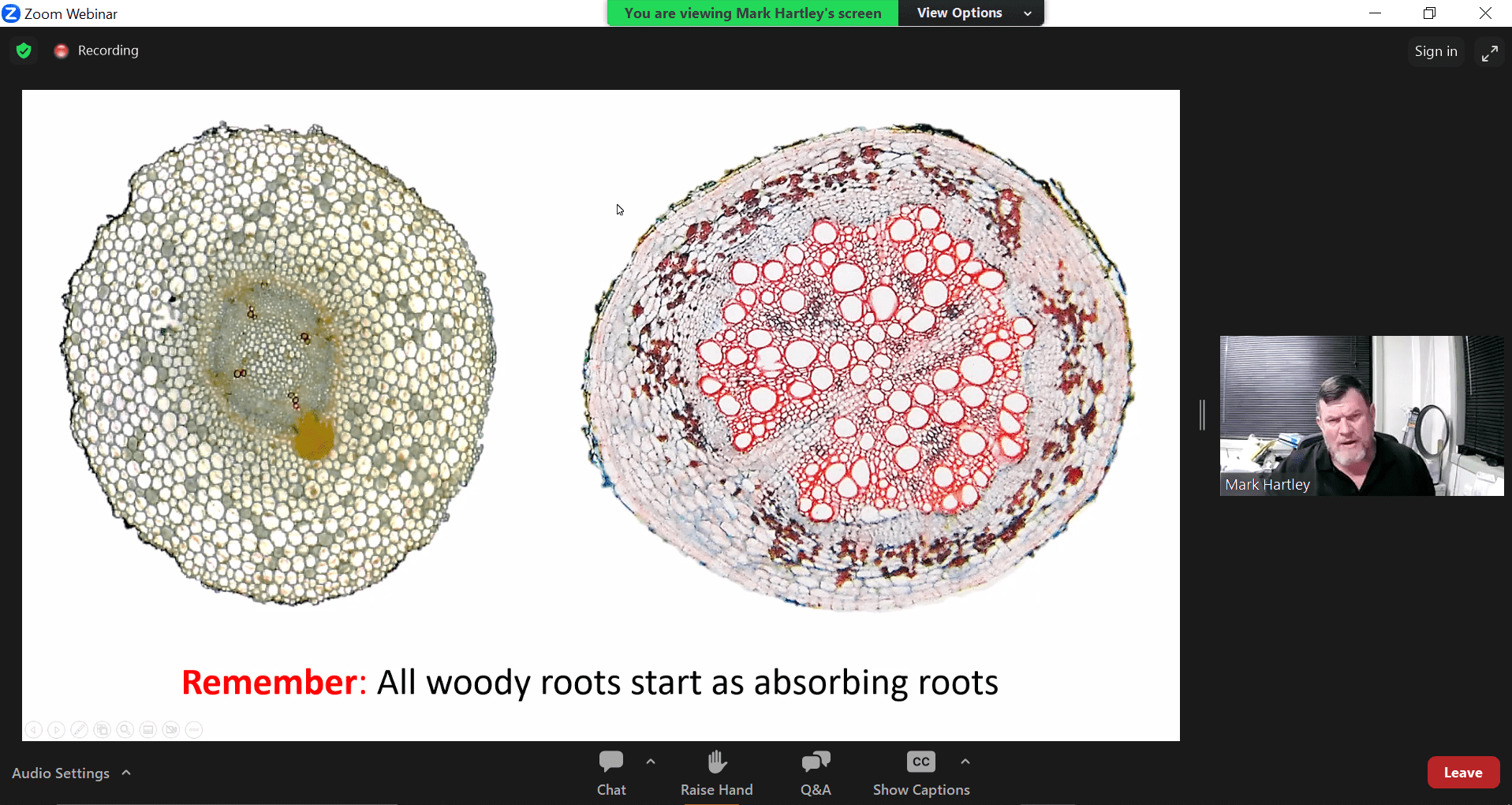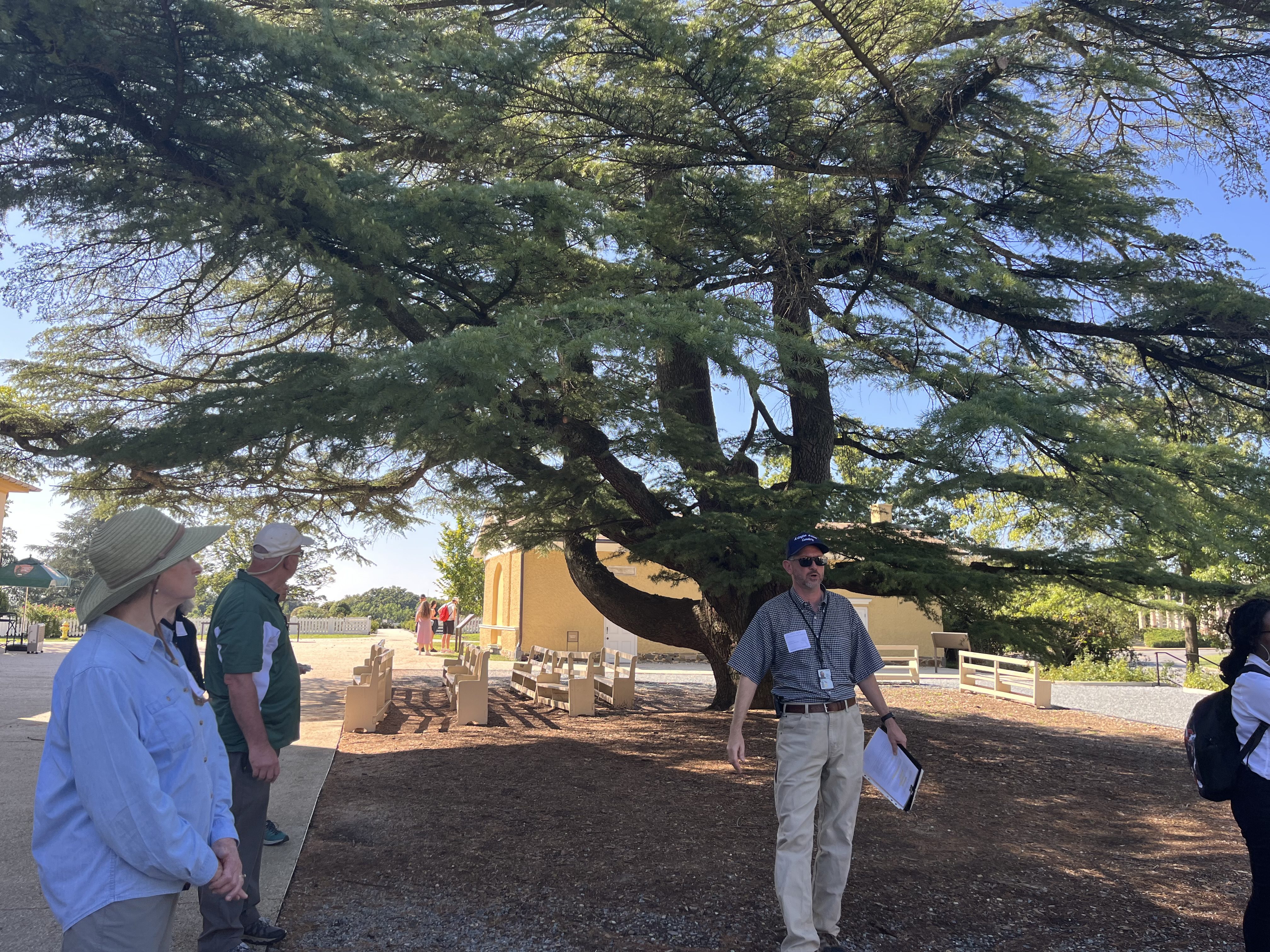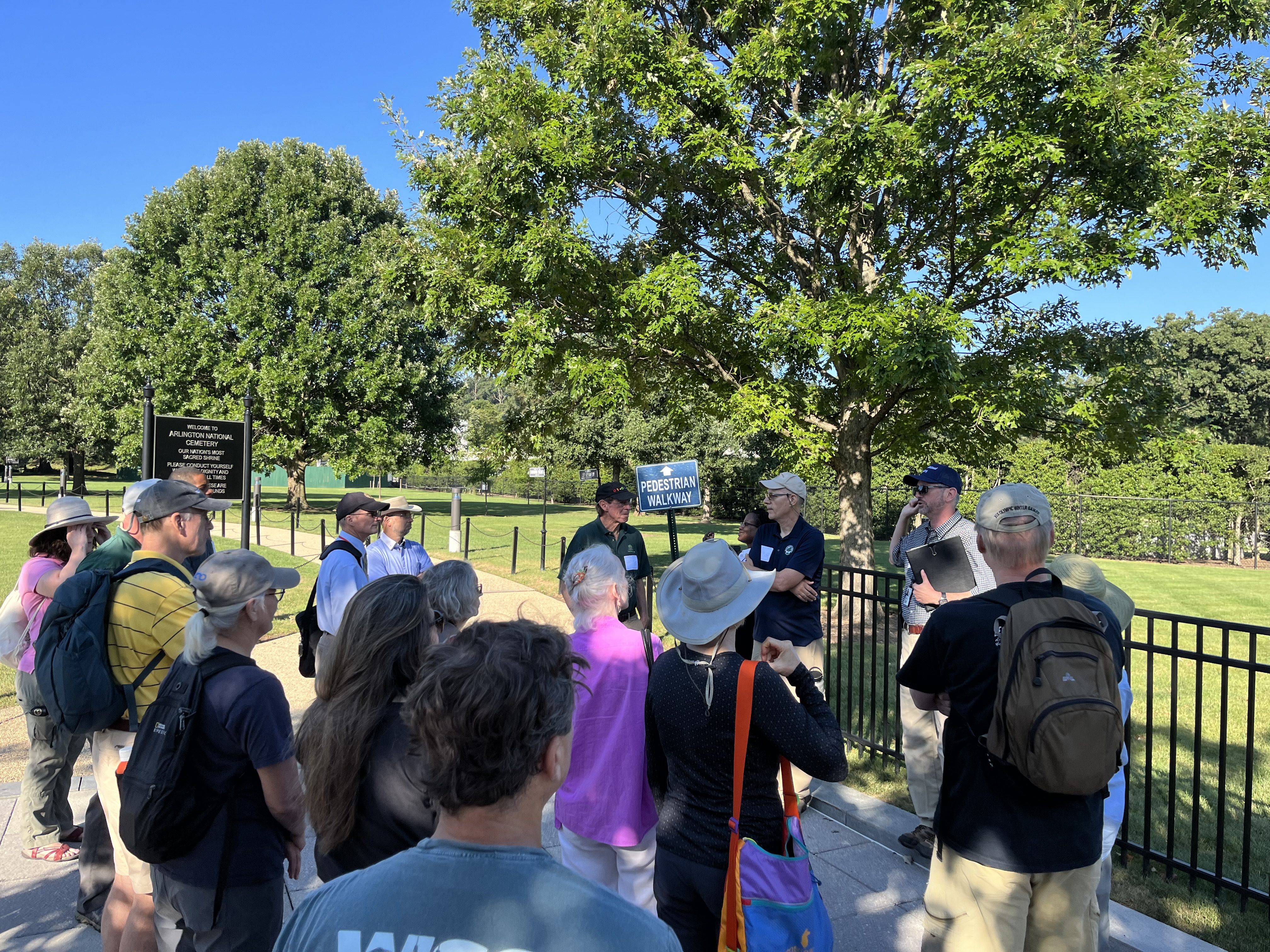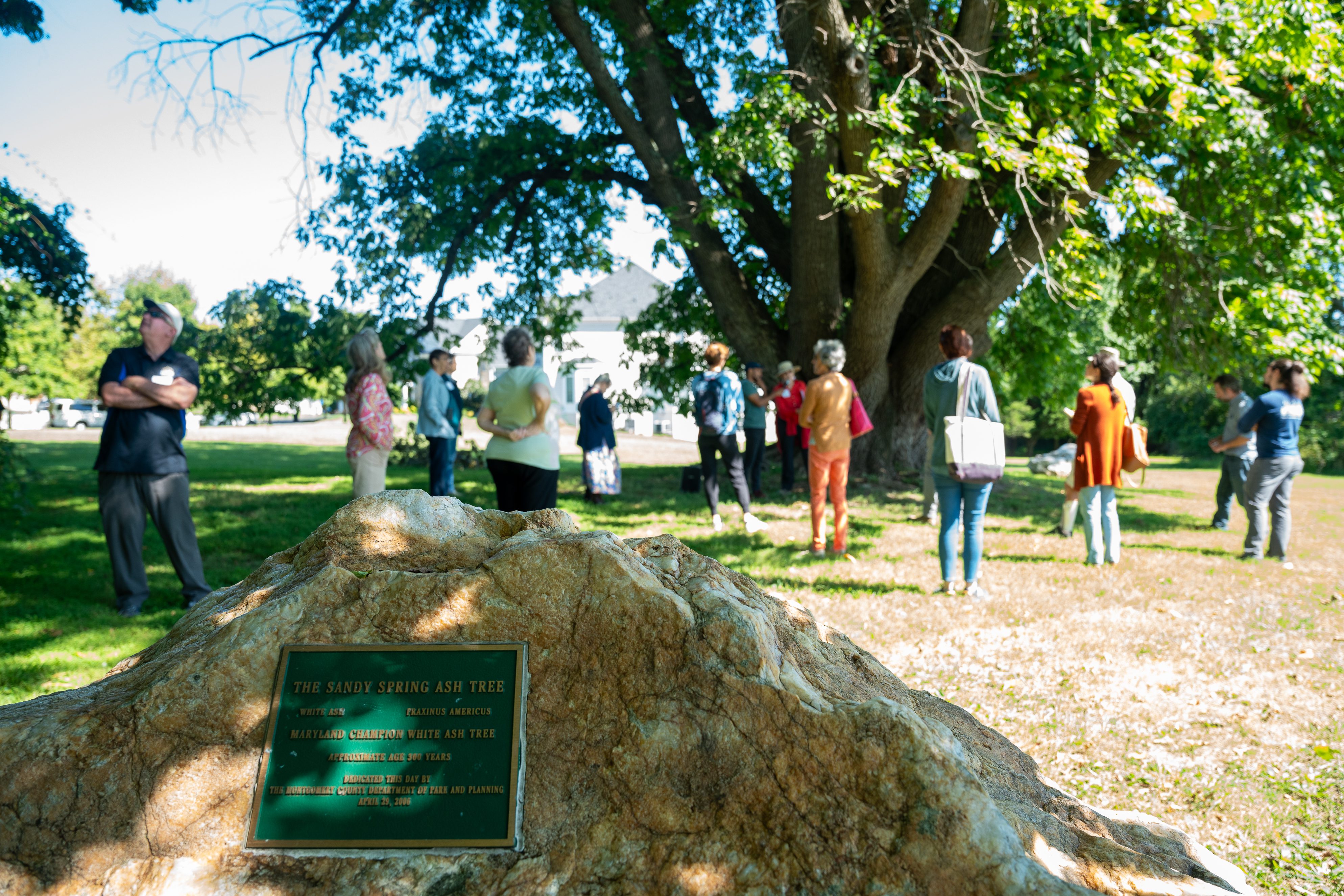
The 2023 Urban Tree Summit brought together tree enthusiasts, arborists, and nature lovers for a week filled with education and outings for all to enjoy. Kicking it off with a wonderful virtual day packed with lessons in urban forestry from around the world, we were honored to have such a great group of speakers joining us to share their knowledge.
Mark Hartley, a Consulting Arborist from The Arborist Network in Sydney, Australia, emphasized the importance of pushing the limits to save trees in urban areas. He argued that if we don’t challenge ourselves to protect trees and sometimes face failures in the process, we risk losing trees due to urban sprawl.
Lydia Scott, the Director of The Chicago Region Tree Initiative at The Morton Arboretum, shed light on the critical role that public gardens can play in enhancing urban forests. She stressed that public gardens are invaluable resources for knowledge, expertise, and support for communities, landowners, and managers.
Matthew Baker, a Professor at the University of Maryland-Baltimore County, tackled the challenge of understanding urban woodlands within the context of limited budgets. He highlighted the need for accurate urban forest inventory and assessment, particularly in eastern cities that often appear to have substantial woodland cover.
Brian Kane, a Professor at the University of Massachusetts, discussed the crucial role of selecting a safe tie-in point (TIP) for tree climbing. He emphasized that the TIP should balance height for mobility with strength to support climbing loads. Understanding these load dynamics is essential for climbers to work efficiently and safely in trees.
The field sessions kicked off with an enlightening tree tour at Arlington National Cemetery, a site of both solemn remembrance and natural beauty. Attendees were treated to an in-depth exploration of the varied tree species that grace the cemetery’s grounds, officially designated as a Class 3 arboretum. But this was no ordinary tree tour—it was a journey through time.
Arborists at the cemetery play a crucial role in preserving the health and integrity of the trees. When making alterations or adding gravesites, careful consideration is given to the well-being of these arboreal residents.
A noteworthy highlight was the hybrid chestnut trees, which have thrived despite the blight that has afflicted many chestnuts in recent years. These hybrids represent the resilience of nature, adapting to environmental challenges with slight genetic modifications.
Participants also encountered the legacy of trees tied to historical figures. At the Kennedy burial memorial, three oaks symbolize the enduring spirit of the fallen. Their predecessor, which stood for decades, succumbed to decay during a fierce storm. Additionally, trees grown from seeds collected at various Civil War sites resonate deeply with the cemetery’s historical significance.
The next field session took place on the hallowed grounds of the United States Capitol, a site integral to the nation’s democratic history. James Kaufmann, Director of the Capitol Grounds and Arboretum at the Architect of the Capitol, led an illuminating tour that revealed the intricate relationship between landscape design and the Capitol Building’s magnificence.
Frederick Law Olmstead, the Landscape Architect of the Capitol, prioritized human health and the integration of nature into the surroundings. While Olmstead’s other designs focused on showcasing vegetation, his vision for the Capitol grounds was to emphasize the building’s beauty. He ingeniously used trees, shrubs, and landscape features to create an element of suspense, gradually revealing the Capitol’s grandeur as visitors approached.
Remarkably, some of the trees planted by Olmstead over a century ago still grace the grounds today, a testament to the enduring legacy of thoughtful landscape design.
The Architect of the Capitol Arborist team diligently cares for over 4,200 trees on the property, conducting annual risk assessments and utilizing GIS systems for spatial tracking. This dedication ensures not only the trees’ health but also the safety of the nearly 30,000 daily visitors.
Our final field session was a Montgomery County Historic tree tour, visiting ten sites across eastern Montgomery County, led by Joe Howard and Carole Bergmann of the Montgomery County Forestry Board. A particularly cherished moment during the tour was the encounter with a white ash tree in Sandy Spring, designated as a champion tree.
As we reflect on the 2023 Urban Tree Summit, we are filled with gratitude and a deep sense of appreciation. It was the participation, dedication, and unwavering support from everyone involved that made this event a resounding success. Thank you to our session leaders and friends at Montgomery County Parks, each of whom illuminated crucial aspects of urban forestry, leaving attendees with a deeper understanding and love for our community’s trees.































